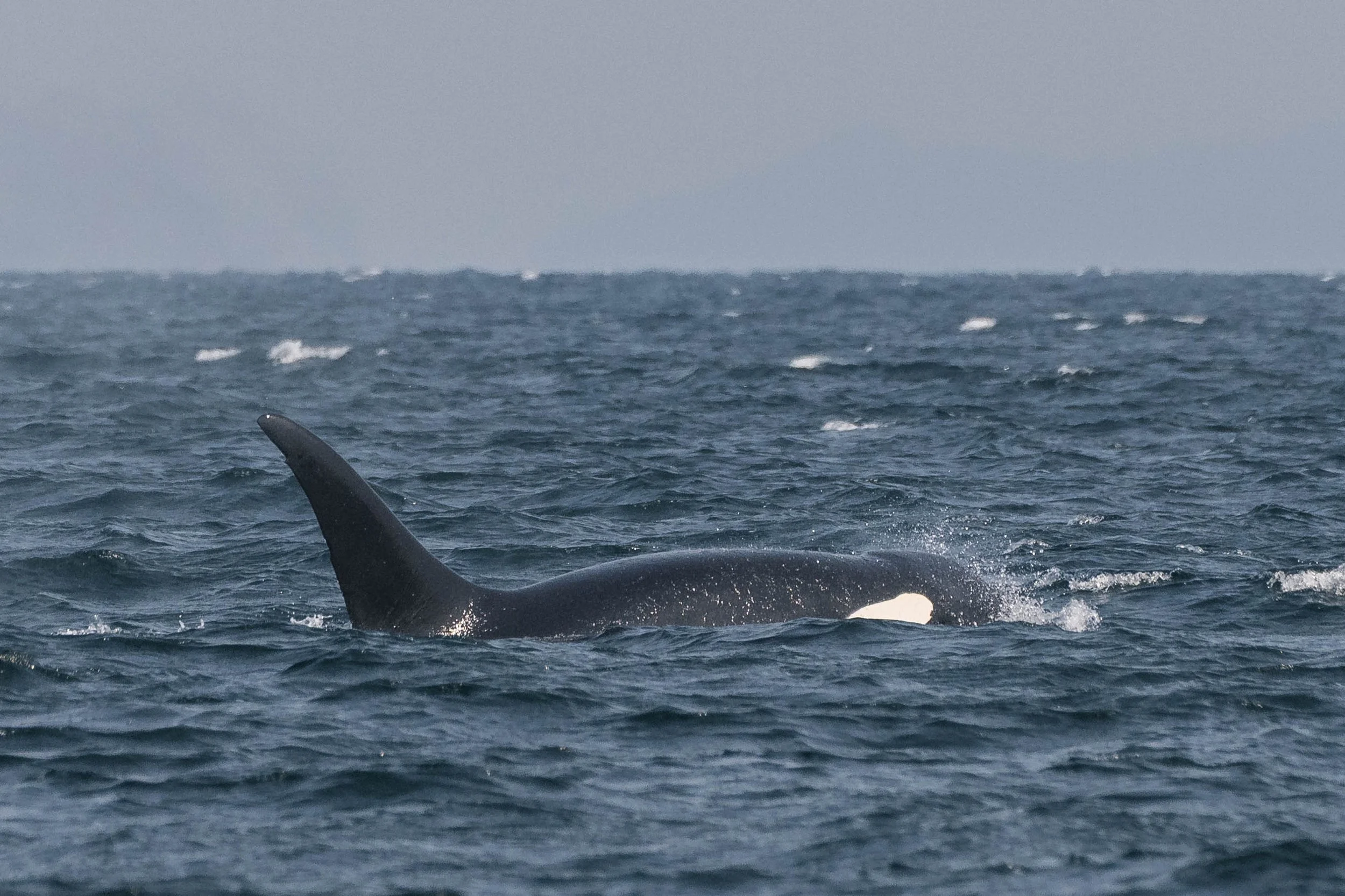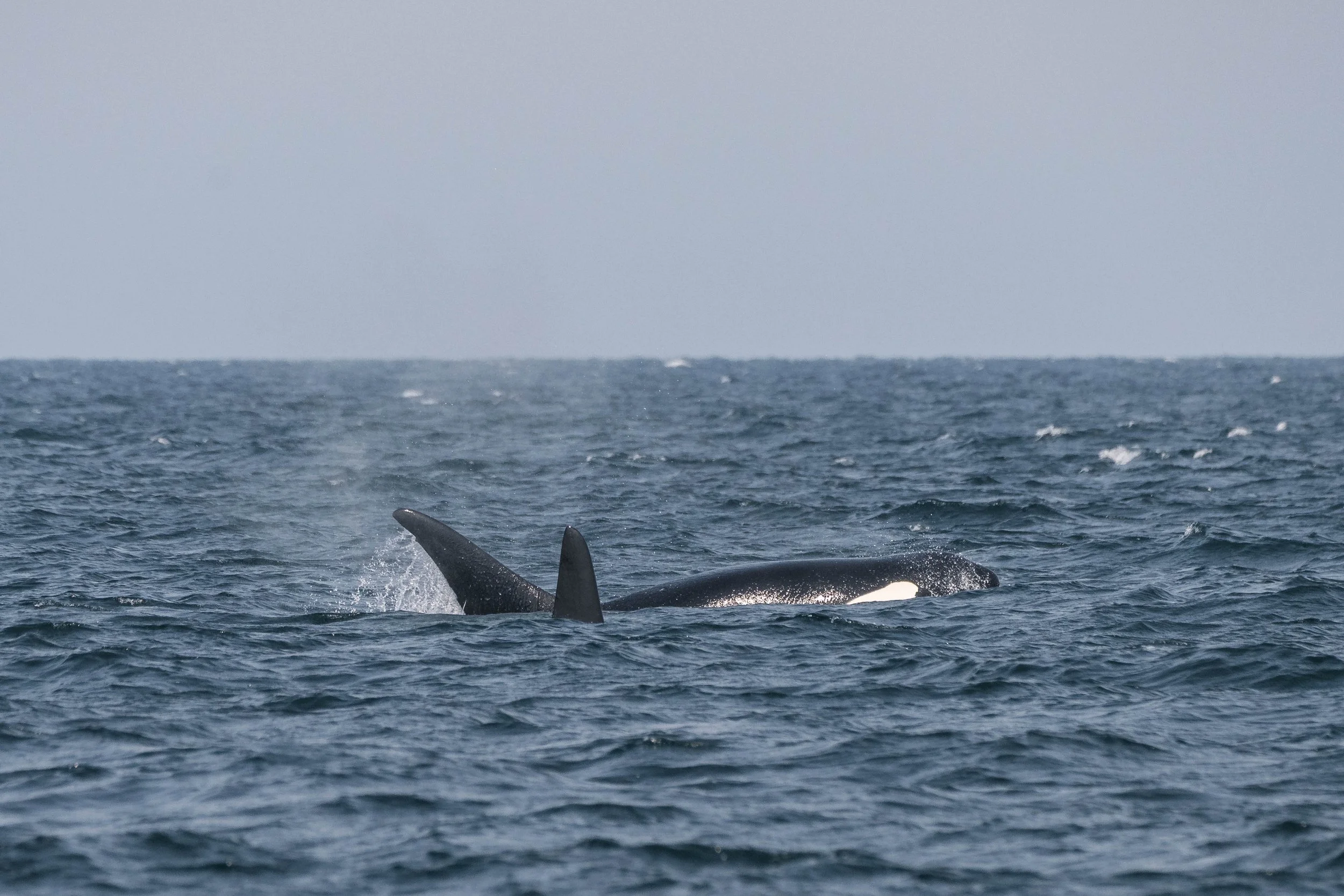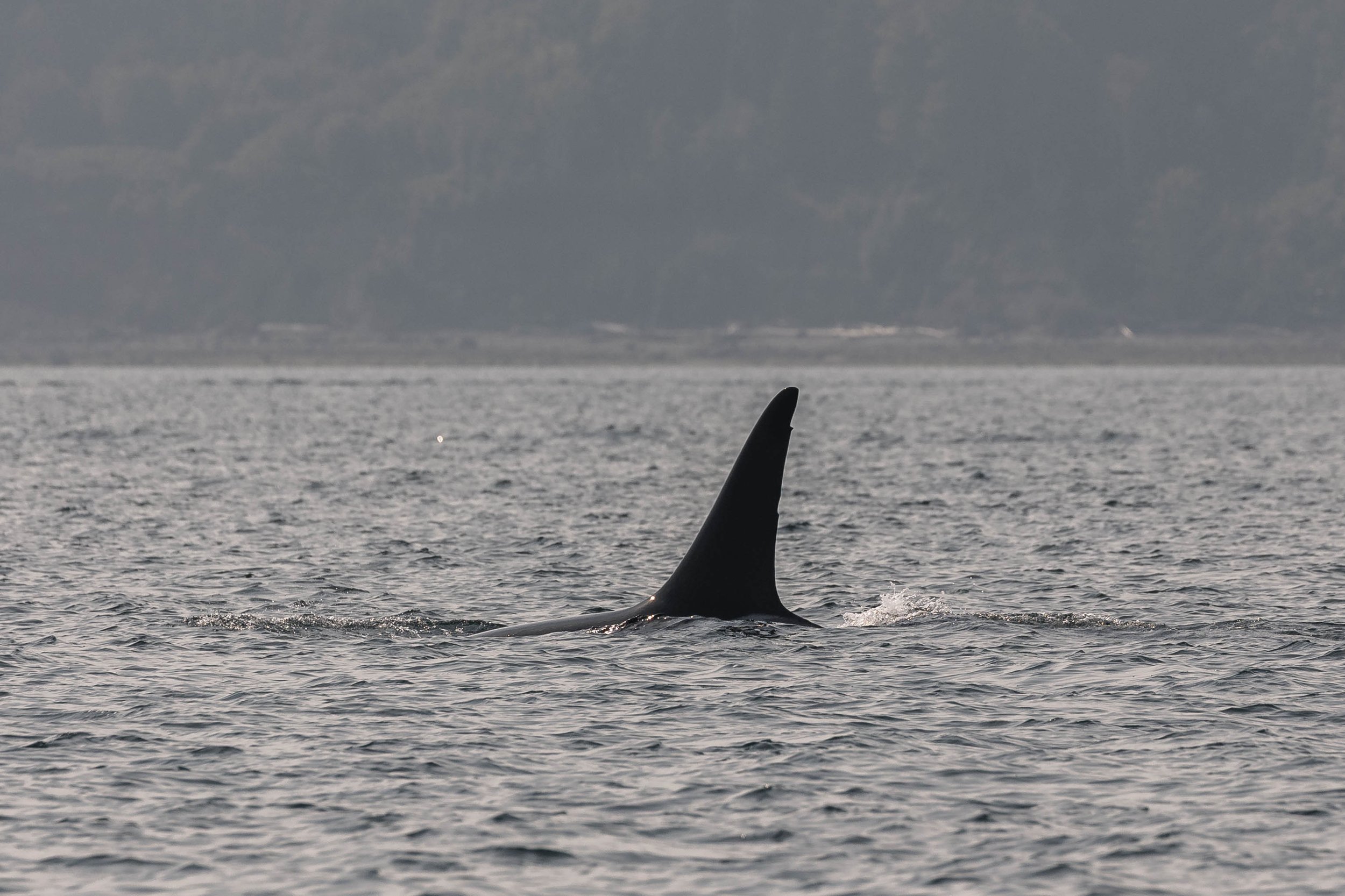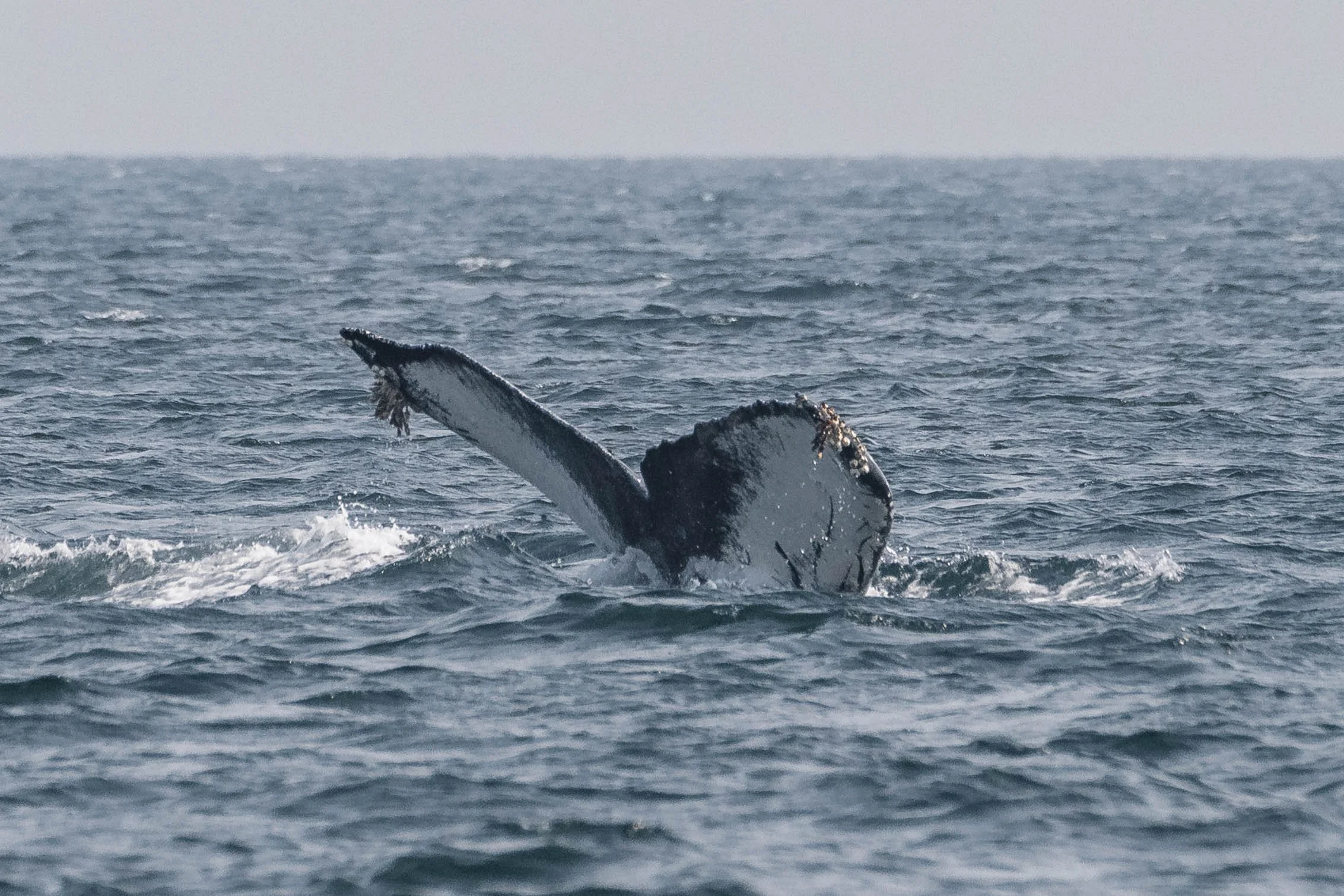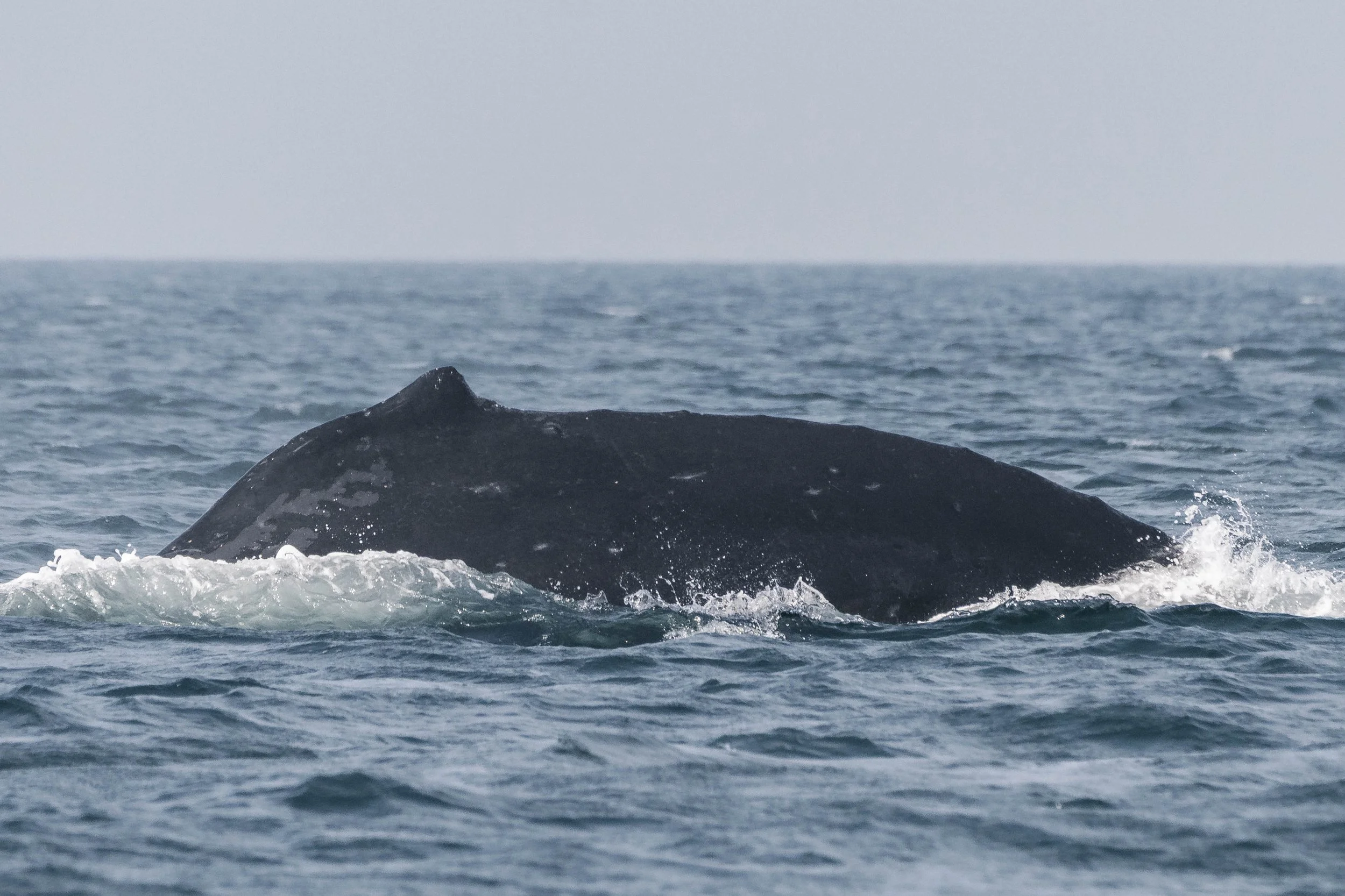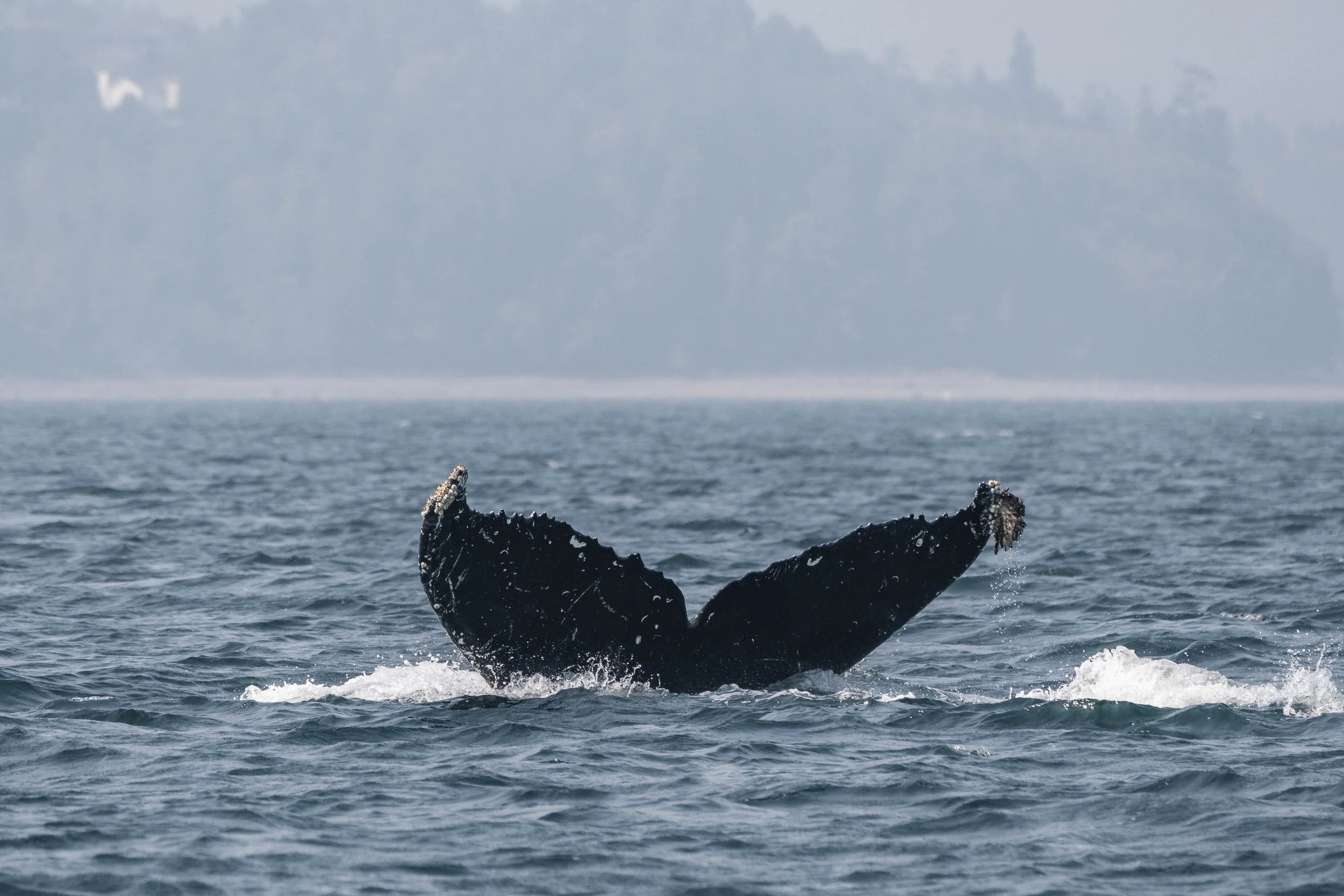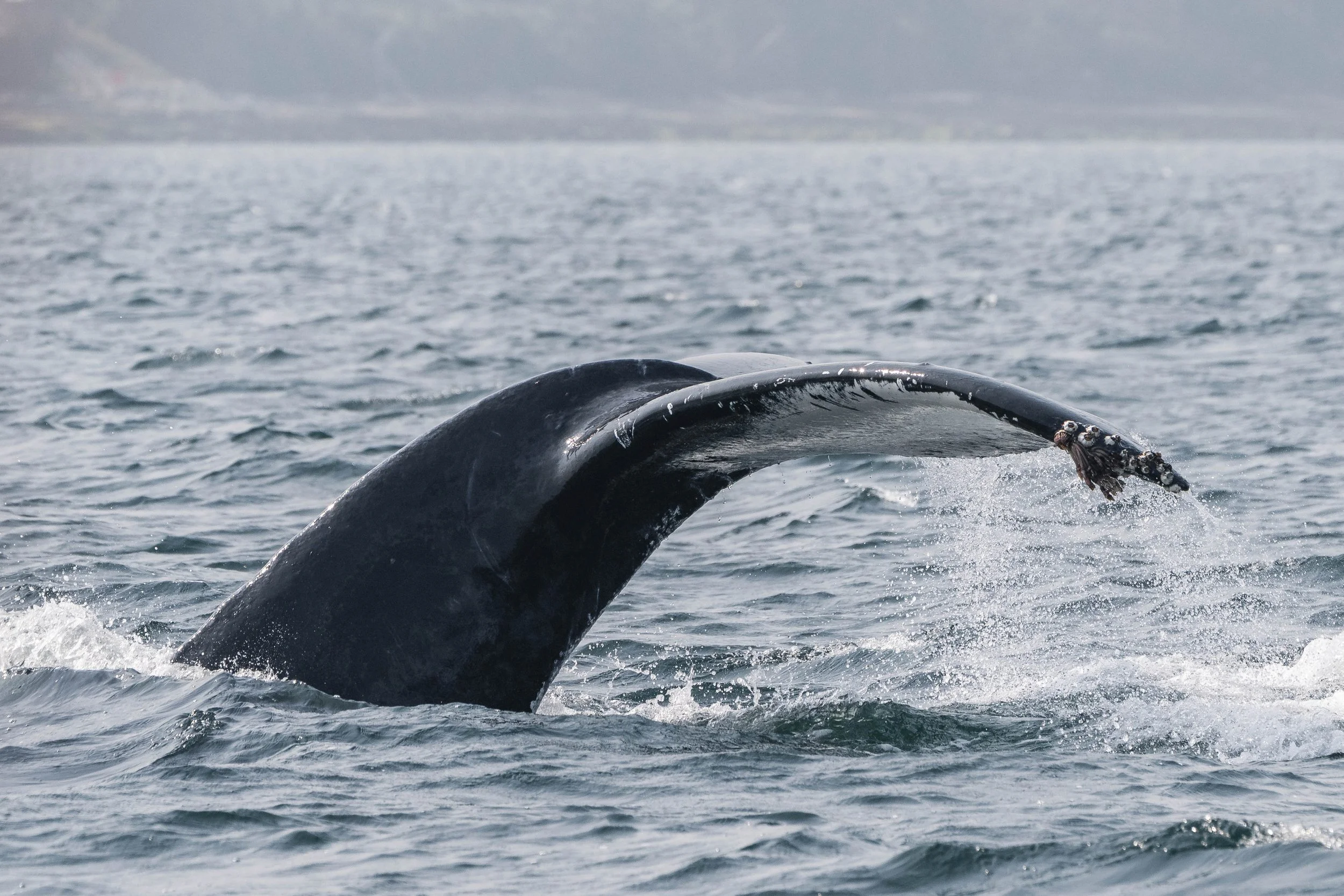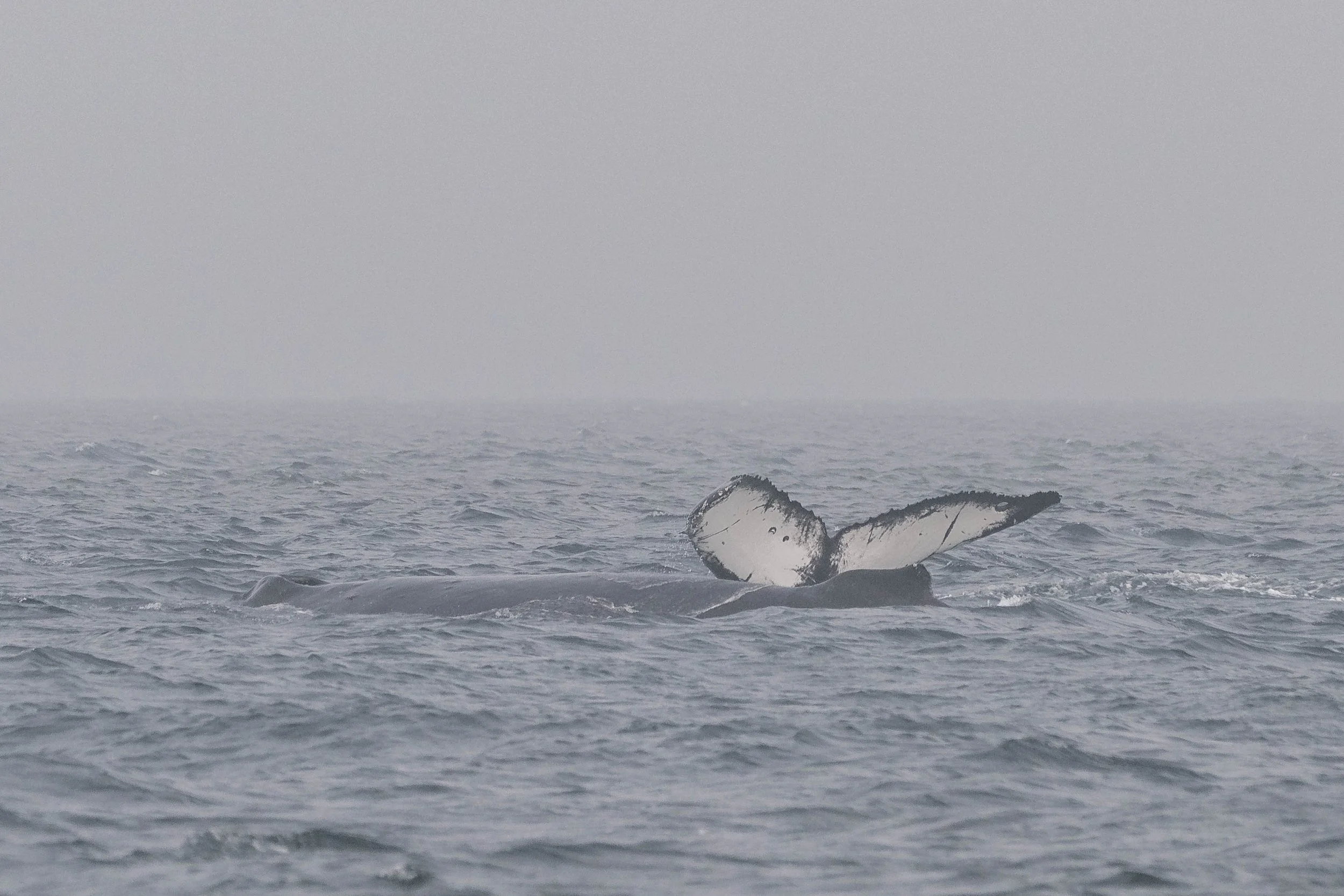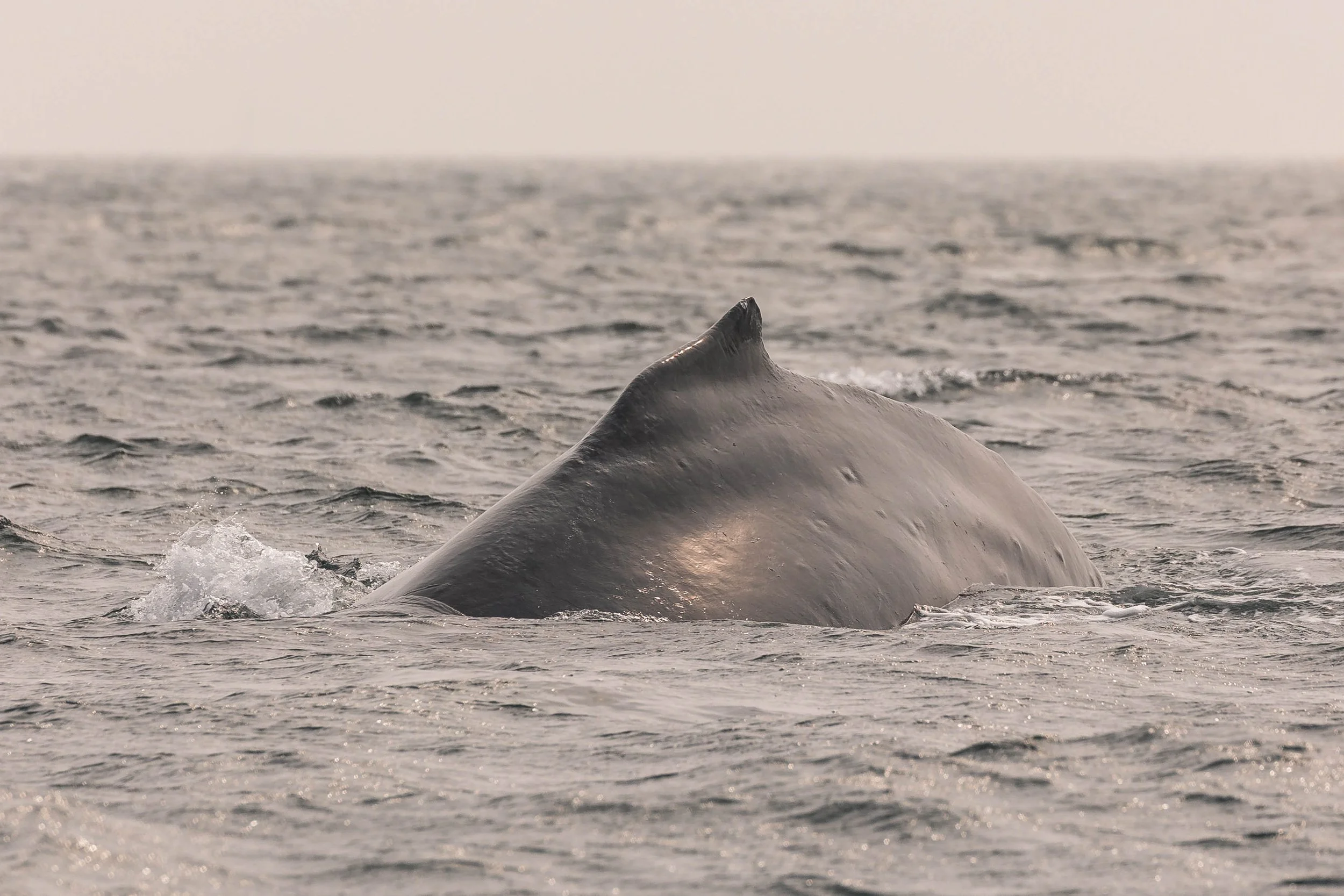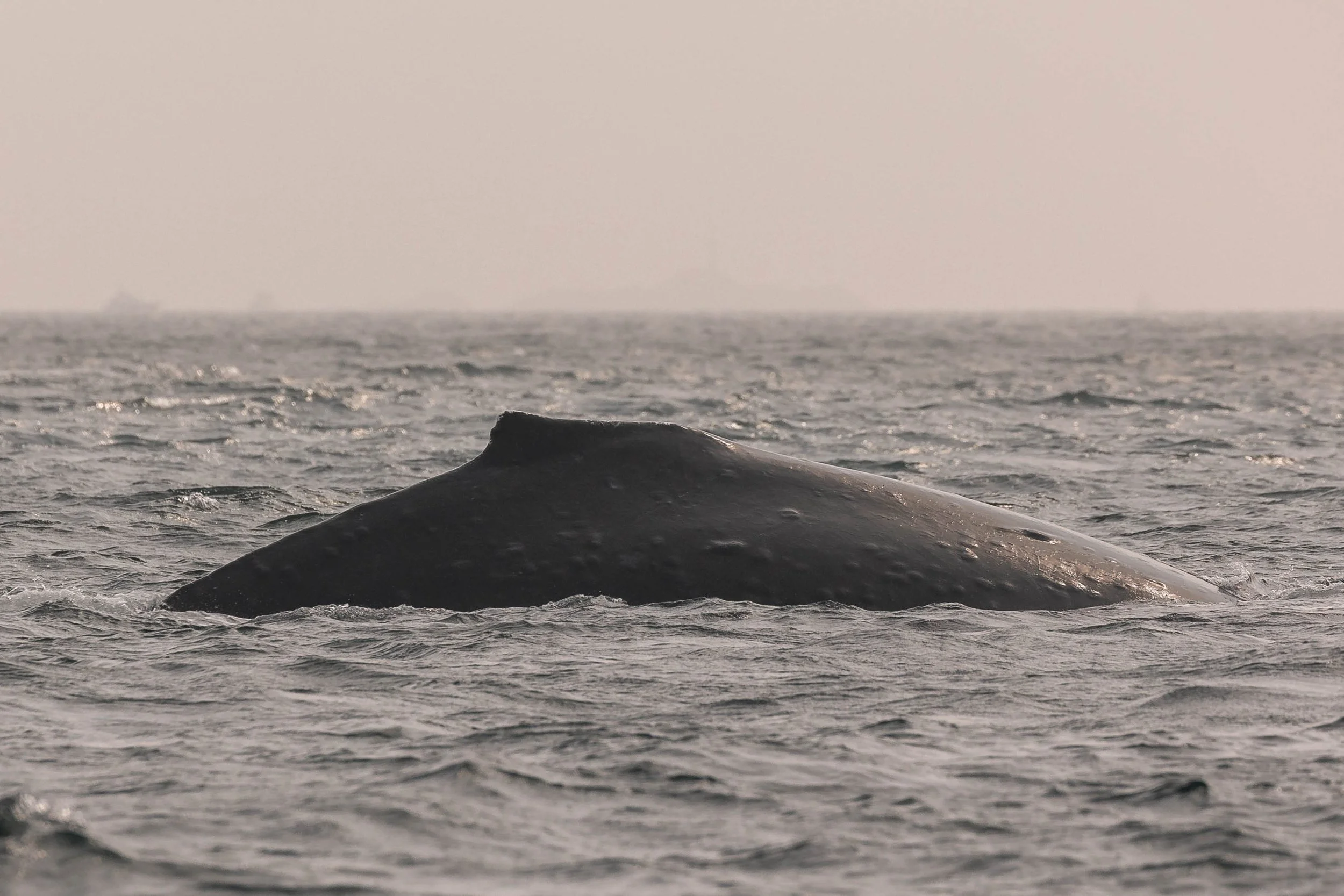September 6, 2025, 10:30 AM - Brothers on the move & humpbacks galore
This morning, we had all three of our vessels off the dock, ready to see what the Salish Sea had in store for us. Conditions were in our favour, light winds, and the sun was out, the perfect recipe for spotting the tall blows and iconic dorsal fins of whales. We set our course north, following reports of whales travelling along the shore.
After about an hour of searching, sharp eyes on board spotted the tall black dorsal of a male orca slicing through the water near North Nanaimo. Not just one, but two fins appeared, a pair of brothers, the orca present were:
T060D Onca ♂ (2004)
T060E Lynx ♂ (2008)
These two are a bit of an anomaly in the world of transient killer whales. While most males stay close to their mothers for life, these brothers are frequently seen travelling away from their family pod, relying on each other’s company instead.
Transient killer whales live in small, tight-knit groups, typically anywhere from 2 to 8 whales. These small pod sizes are an adaptation to their hunting style. Unlike their fish-eating cousins, the resident orca, transients hunt marine mammals, everything from seals to porpoises to sea lions and on ocasion other cetaceans. To be successful, they hunt like wolves, coordinating silent ambushes. Travelling in large, noisy groups would give away their presence, so stealth and precision are their greatest assets.
This is why the bond between Onca and Lynx is so fascinating. By travelling together without their mother or other family members, they may have become an especially effective hunting duo. Two mature males working in sync could easily outmaneuver unsuspecting prey, a reminder of just how adaptable and intelligent orca are.
Not long after leaving the brothers to continue their travels, our search turned up another spectacular sight: humpbacks! And not just one or two, several! We spent time with Valiant (BCX1773), Valiant’s 2025 calf (BCX1773 calf 2025), Nike (BCX1377), Scuttle (BCX1795), Beak (BCX1606), Aether (BCZ0414 calf 2024), Fishbone (BCY1474), and Fader (BCY0195). The group was active and social, surfacing with energy as though enjoying each other’s company.
Our encounter became even more intriguing when the orca brothers passed within sight of the humpbacks. To our surprise, both sides ignored each other entirely. Normally, this wouldn’t be unusual; orca and humpbacks do often pass by without incident. But one member of this group, Valiant, has a very different history with killer whales.
Valiant is one of the most remarkable humpbacks in the Salish Sea. As a calf, she survived an attack by orca, but not without lasting scars. The tips of her flukes are missing and are marked with teeth scars, reminders of that violent encounter. Yet, against the odds, she survived.
Now, years later, Valiant has a calf of her own. She’s also earned a reputation for charging orca, even adult males, when they come too close. While most humpbacks prefer to avoid confrontation, Valiant seems unwilling to let her past trauma go, and she’s been documented actively driving orca away.
Humpbacks, after all, are built more for fight than flight. With their sheer size (adult females can exceed 40 tonnes), massive tails, and surprising agility, they are formidable when threatened. And with more than one humpback present, their chances of fending off an attack increase dramatically. That said, successful predations on humpbacks have never been documented in our waters, despite the growing overlap between the two species.
On this day, our best guess was that Valiant felt secure. Surrounded by other adult humpbacks, she may not have seen the need to act aggressively toward Onca and Lynx. The brothers, meanwhile, seemed uninterested in the humpbacks, moving along on their own mission.
As if whales weren’t enough, we rounded out the day with more wildlife. Harbour seals were lounging lazily on the rocky outcrops, while California Sea Lions barked and jostled for space on the log booms. Over at the Gabriola Bluffs, we admired cormorants perched against the cliffs, drying their wings in the sunshine.
From there, we pointed our bows back toward Nanaimo, feeling grateful for a day that highlighted the richness and complexity of life in the Salish Sea. From stealthy orca brothers to resilient humpbacks and everything in between, every trip reminds us how much there is to learn, and how much there is to protect, out on these waters.
Enjoy the photos below taken by Val Watson, Hayleigh Hilbert and Desarae Poier.
T060D Onca. Photo by Val Watson.
Just the tip of T060D Onca’s dorsal fin. Photo by Val Watson.
T060D Onca swimming away. Photo by Val Watson.
T060E Lynx picking up some speed. Photo by Val Watson.
T060E Lynx surfacing behind T060D Onca. Photo by Val Watson.
T060E Lynx making waves. Photo by Hayleigh Hilbert.
T060E Lynx’s dorsal fin. Photo by Desarae Poier.
T060D Onca surfacing. Photo by Hayleigh Hilbert.
T060E Lynx slipping below the surface with T060D Onca surfacing beside him. Photo by Desarae Poier.
Scuttle following Nike. Photo by Val Watson.
Aether going down. Photo by Val Watson.
Fishbone fluking. Photo by Val Watson.
Nike’s dorsal fin. Photo by Val Watson.
Nike fluking. Photo by Val Watson.
Fishbone diving. Photo by Val Watson.
Scuttle fluking. Photo by Val Watson.
Aether’s dorsal fin. Photo by Val Watson.
The top of Aether’s tail. Photo by Val Watson.
Aether fluking. Photo by Val Watson.
Aether fluking as Scuttle surfaces beside. Photo by Val Watson.
Valiant’s scared up tail, can you spot the missing tips? Photo by Hayleigh Hilbert.
Aether fluking. Photo by Hayleigh Hilbert.
Cascadia watches as Aether arches to dive and Fader flukes in front. Photo by Hayleigh Hilbert.
The top of Valient’s tail. Photo by Desarae Poier.
A pec fin in the air! Photo by Desarae Poier.
Valiant surfacing with her calf in tow. Photo by Desarae Poier.
Valiant’s calf doing a headstand. Photo by Desarae Poier.
Valiant’s calf fluking. Photo by Desarae Poier.
Valiant’s calf fluking. Photo by Desarae Poier.
Beak fluking. Photo by Desarae Poier.
Scuttle arching for a dive. Photo by Desarae Poier.
Fader’s dorsal fin. Photo by Desarae Poier.
Fader fluking. Photo by Desarae Poier.
Harbour seals lounging on the rocks. Photo by Desarae Poier.
A flock of cormorants. Photo by Desarae Poier.
California Sea Lions on the log booms. Photo by Hayleigh Hilbert.
Colourful sea stars at low tide. Photo by Hayleigh Hilbert.
Cormorants nesting at the Gabriola Bluffs. Photo by Hayleigh Hilbert.




